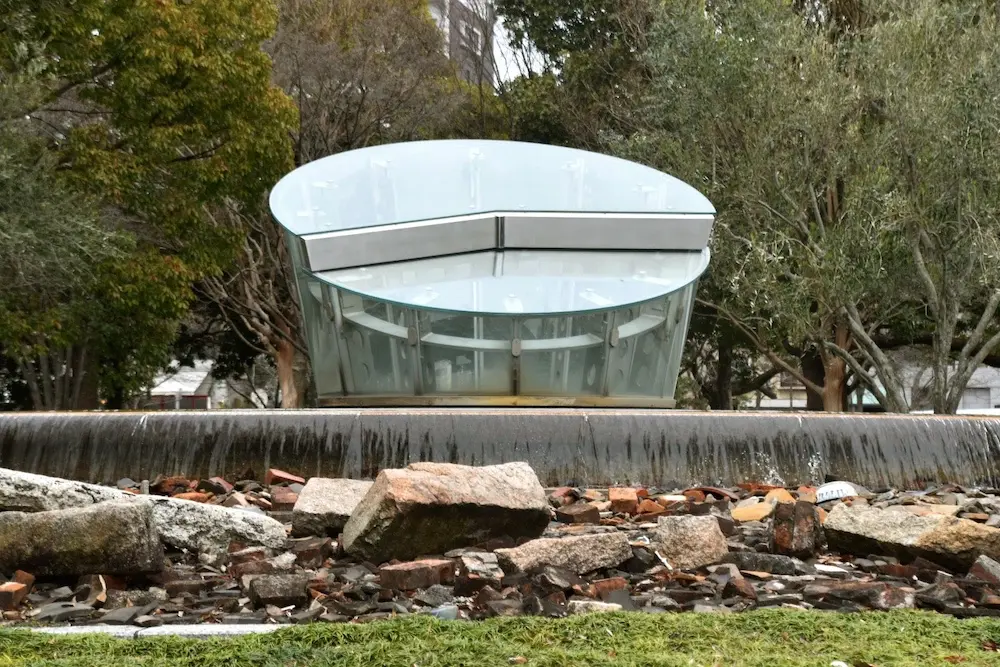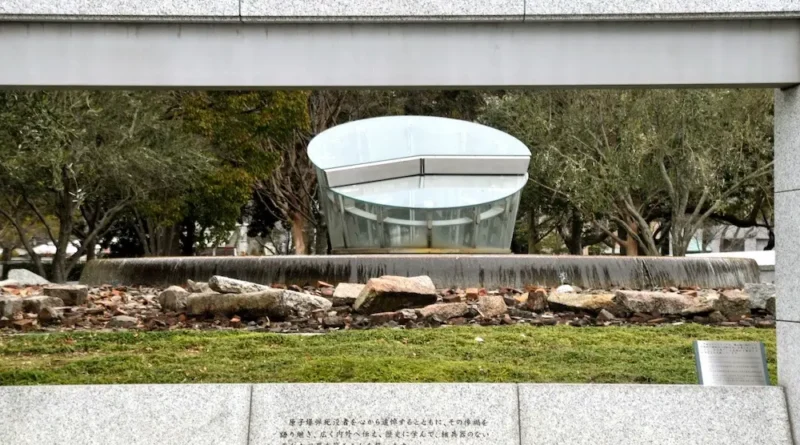Hiroshima National Peace Memorial Hall for the Atomic Bomb Victims
In the heart of Hiroshima Peace Memorial Park, a short distance from the iconic A-Bomb Dome, which stands across the river, is a quiet, contemplative space that offers a more personal encounter with Hiroshima’s tragic history. The Hiroshima National Peace Memorial Hall for the Atomic Bomb Victims is a place of remembrance, reflection, and mourning — a solemn tribute to the thousands of lives lost as a result of the world’s first A-bomb attack.
A Space for Personal Remembrance

Unlike the adjacent Peace Memorial Museum, which provides historical context and documentary evidence of the atomic bombing, the Memorial Hall focuses on the personal and emotional dimensions of the tragedy. Its aim is to give voice to the victims — not only those who perished in the blast, but also those who suffered and died in the months and years that followed.
From the park above, the building reveals little — just a circular structure of subdued concrete and an opening that peers down to a still pool below. The path into the Memorial Hall slopes gently underground, echoing the passage of time back to the moment when the world changed.

At its heart lies the Hall of Remembrance, a circular chamber where silence speaks volumes. A 360-degree panorama, composed of 140,000 tiles, depicts Hiroshima as it appeared from the bomb’s hypocenter in the aftermath. Each tile represents a life lost by the end of 1945. In the center, a fountain shaped like a clock is frozen at 8:15 a.m. — the exact moment of the bombing — with water flowing gently in memory of the victims who cried out for water in their final moments. Surrounding the space, the names of Hiroshima’s neighborhoods are inscribed, arranged according to their distance from ground zero.
A Master Architect’s Final Tribute

The Memorial Hall is the work of Kenzo Tange, one of Japan’s most celebrated modern architects and a significant contributor to Hiroshima’s postwar vision.
Decades earlier, Tange designed both the Hiroshima Peace Memorial Museum and the master layout of the Peace Park, which centered around what has become known as the “Peace Line.” It proved to be one of the great architect’s last projects — Tange passed away 3 years after the Hiroshima National Peace Memorial Hall for the Atomic Bomb Victims opened in 2002.
His design for the Memorial Hall is deeply symbolic — a space where time, memory, and architecture converge. From the twelve wooden pillars that support the roof to the ritual-like descent into the underground chamber, every element of the structure is meant to evoke reverence and reflection. It’s modern, minimalist, and profoundly moving.
Voices Preserved

Beyond its physical design, the Memorial Hall houses a growing digital archive of testimonials, photographs, and written accounts from atomic bomb survivors and bereaved families. These records are available for public viewing and continue to be collected in cooperation with families and communities across Japan.
This effort ensures that the names, faces, and voices of the victims are not lost to time — that they remain more than statistics, and are remembered as individuals with hopes, families, and stories.
The hall’s mission is clear: not only to mourn the past, but to ensure it is never forgotten.
A Place to Listen and Reflect

The Hiroshima National Peace Memorial Hall is not a place to rush through. It invites visitors to slow down, listen, and remember — to consider the fragility of peace and the weight of loss. In a world still struggling with the consequences of war and violence, it offers a powerful, quiet message: that peace must be continually chosen, and that remembering is an act of hope.
Whether you’re visiting Hiroshima for the first time or returning to reflect more deeply, this is a space that stays with you — long after you’ve walked back into the sunlight.
Visitor Information
Address: 1-6 Nakajima-cho, Naka-ku, Hiroshima City, Hiroshima Prefecture
Access: A short walk from the Genbaku Dome-mae (Atomic Bomb Dome) streetcar stop
Website:/strong> https://www.hiro-tsuitokinenkan.go.jp/
Hours: 9:00 a.m. – 5:00 p.m. (last admission at 4:30 p.m.)
Closed: December 30 – January 1
Admission: Free





